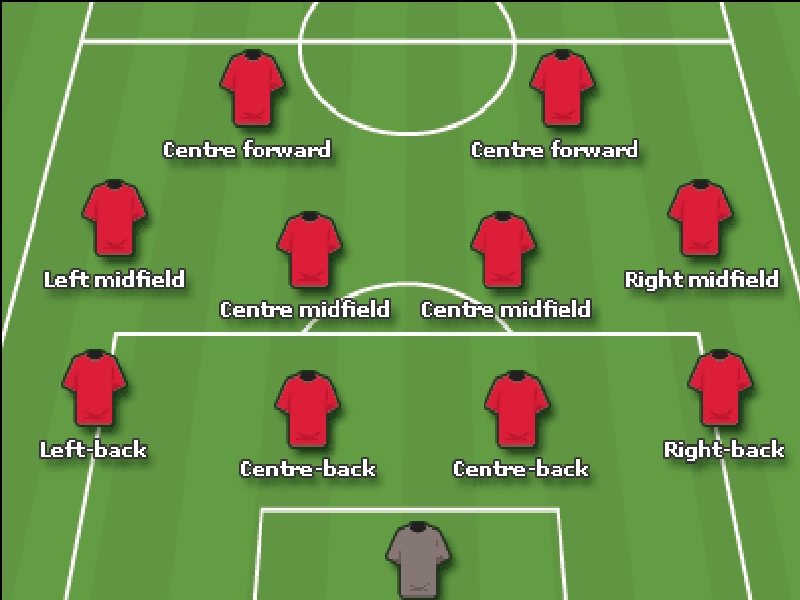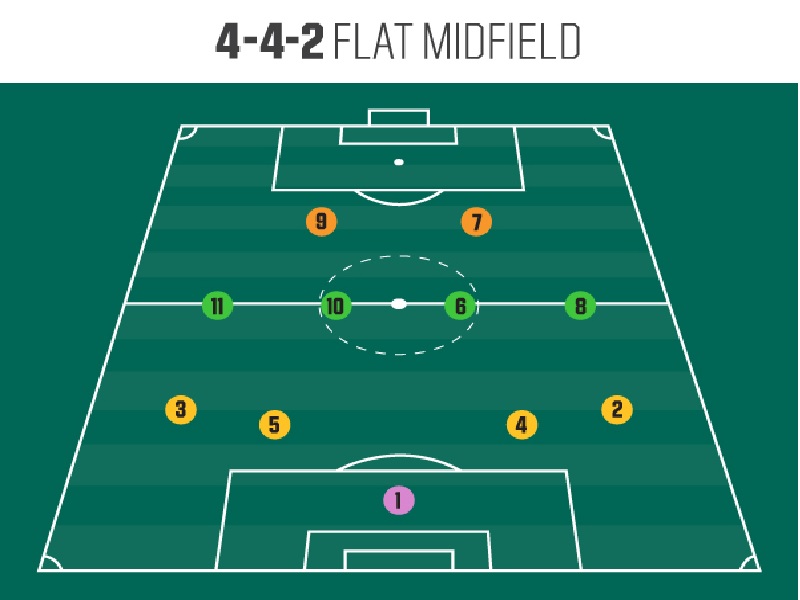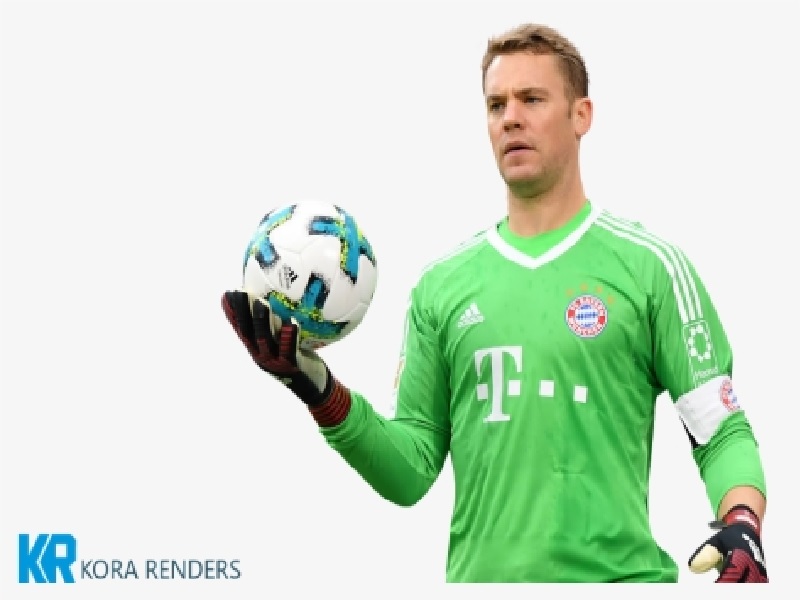All Football Soccer Positions: The Numbers, Player Roles & Basic Formations on Olesport TV website
You may not remember the names of all the roles on the soccer team if you are new to the sport. Some positions, such as midfield and center, are very obvious. Do you understand the difference between full-back and half-back, as well as the positions they play on the pitch? You will be able to understand how to complete different turns and master the fundamentals of offensive and defensive strategy if you can recognize the different positions on a team. Therefore, the Olesports TV website will help you understand all the positions in football and the role of each position.

Let's take a look at each offensive football position one by one.
Offensive Football Positions
The quarterback position
Normally, how many people are on the field: 1
The most common alignment is exactly behind the center.
Throwing the ball and passing the ball are the main responsibilities.
In every play, the quarterback is one of two players who touch the ball (the other being the center.) The quarterback stands up behind the center at the start of each play and receives the ball when the center "snaps" it. The distance between the quarterback and the center is determined by the formation. The quarterback can either pass the ball or hand it off to another player after he takes the snap (or run it himself).
Quarterbacking necessitates a high level of intelligence. You must be aware of what each offensive player performs on each play, and you must occasionally change the play based on the defense's actions. While speed isn't required for success at the quarterback position, it certainly helps. A quarterback is typically a tall, educated player with a powerful throwing arm and great leadership abilities.
Halfback/Tailback
How many people are on the field: 1
Typical quarterback alignment: behind or next to the quarterback.
Running with the ball is the primary job.
The tailback (or halfback) and fullback are the two running back positions. The quarterback's tailback normally lines up directly behind or next to him. His precise alignment is determined by the formation. Tailbacks are the players that receive the ball from the quarterback and attempt to gain yardage by running forward. Tailbacks are often shorter, smaller players that can move quickly and easily through narrow spaces. Out of the backfield, tailbacks are occasionally employed as receivers. A typical tailback is a quick, agile player with excellent vision who can break tackles and carry the ball successfully.
Fullback
How many people are on the field: 1
Typical positioning: in front of or adjacent to the tailback.
The other running back, called the fullback, usually lines up directly in front of or directly next to the tailback (which also puts him in close proximity to the quarterback). His exact alignment depends on the formation. For example, in certain offenses the fullback lines up right behind the line of scrimmage, an alignment in which the fullback is commonly referred to as the “H-Backs.” The fullback is typically the player who lead-blocks for the tailback on running plays. They’re usually strong, stocky players who can move defensive players out of the way to give ball carriers room to run. Occasionally, fullbacks receive a handoff and run the ball themselves. This usually occurs when only a small amount of yardage is needed. They also occasionally go out for a pass. The typical fullback is a tough, powerful player with above average size and a knack for blocking.
Wide Receiver
On average, how many people are on the field: a pair or more
Typical alignment: on or near the line of scrimmage, with the widest horizontal alignment on the field.
The primary task is to catch passes.
Wide receivers frequently line up on or around the scrimmage line. Their alignment width varies depending on the formation, but it is usually the widest of any offensive player. In a basic offensive formation, there are two wide receivers. Depending on the configuration, an offense can line up as many as five wide receivers. Wide receivers are often medium-to-above-average in height, with good speed and the ability to catch throws.
Center
How many people are on the field: 1
The most common alignment is straight over the football.
Snapping the ball and blocking are the main responsibilities.
Every offensive play begins with the center snapping the ball to the quarterback. The center, along with guards and tackles, makes up the "offensive line." The center's primary responsibility after snapping the ball is to block defensive players. The defensive alignment of the opposing team and the offensive play call determine who and how he blocks. Centers are usually tall, stout guys that have a lot of strength. They're usually one of the offense's bigger players.
Guard
On average, there are two people on the field.
The standard alignment is to the left and right of the center.
Blocking is the main responsibility.
On the offensive line of a typical football offense, there are two guards. One aligns to the left of the center, whereas the other aligns to the right. These players are known as the left guard and the right guard, respectively. Guards are similar to centers, except they are larger. A guard's major responsibility is to block defensive players. The average guard is a large player with excellent blocking skills.
Tackle
On average, how many people are on the field: 2
Typical positioning is to the left of the left guard and to the right of the right guard.
Blocking is the main responsibility.
On the offensive line of a typical football offense, there are two tackles. The left tackle (also known as the "left tackle") lines up to the left of the left guard, while the right tackle (also known as the "right tackle") lines up to the right of the right guard. Tackles are the most powerful players on the field. The majority of their time is spent blocking defensive players. Because they frequently have to block defensive players in space with little or no support, they are usually a little faster and stronger than the other offensive lineman.
Tackles, like the center, must be intelligent in order to understand what the defense is doing and make the necessary adjustments. A typical tackle is a large athlete with excellent blocking skills.
Tight-End
Normally, how many people are on the field: 1
Outside of the tackle is a common alignment.
Catching passes and blocking are the main roles.
The tight end is a cross between a wide receiver and an offensive lineman. He's usually bigger and stronger than a wide receiver while being smaller and speedier than an offensive lineman. Tight ends can line up anywhere on the field, although they are most commonly placed adjacent to the left or right tackle. Although having one tight end on the field is common, having two tight ends on the field at the same time is becoming increasingly popular. A typical tight end is a tall athlete who is capable of both receiving and blocking passes.
Defensive Football Positions
The purpose of all defensive football positions is to prevent the offense from gaining yards and scoring. That sounds basic enough, but for the defense to succeed, players at each position must carry out various roles. Here's an example of a simple defense.
Let's take a closer look at each defensive football position.

Defensive Tackle
On average, how many people are on the field: 2
Typical alignment: on the opposite side as the offensive center or guards.
Main tasks include limiting middle-of-the-field runs and rushing the quarterback.
Although the number of defensive tackles on the field varies based on the formation, most basic defenses have two. Defensive tackles are part of a group of players known as the "defensive line," which also includes defensive ends. In the middle of the defense, across from the offensive center and guards, defensive tackles line up next to each other. Defensive tackles are often very massive players that can hold their own against two offensive lineman when double-teamed.
The defensive tackle's primary responsibility is to keep the offense from running the ball up the middle and to apply pressure on the quarterback in passing situations. Defensive tackles are often big, hefty players with exceptional strength who can hold their own against offensive lineman.
Defensive End
On average, how many people are on the field: 2
Outside of the defensive tackles, across from the offensive tackles is a typical configuration.
Preventing runs to their side and rushing the quarterback are the main responsibilities.
Though the number of defensive ends on the field varies based on the formation, most basic defenses include two. The fact that they "bookend" the defensive line is most likely the source of their name. Their primary objective is to keep the offense from running the ball to their side and to sack the quarterback on passing plays. Defensive ends are often lighter and speedier than defensive tackles since their jobs demand them to cover more territory.
Middle Linebacker
Normally, how many people are on the field: 1
4 to 7 yards behind the line of scrimmage, straight across from the center
Run defense, pass coverage, and communicating assignments are the main roles.
Because he must know every defensive player's assignment and periodically make adjustments to the defense based on what the offense is doing, the middle linebacker is often referred to as the "quarterback of the defense." The middle linebacker is a jack-of-all-trades who must be able to stop the run as well as efficiently cover the pass. The middle linebacker is frequently in the thick of things, and he regularly leads the team in tackles. The average middle linebacker is a big, smart guy who can tackle well.
Outside Linebacker
On average, how many people are on the field: 2
Typical alignment: roughly the width of the defensive end, 3 to 5 yards behind the line of scrimmage.
Run defense, pass coverage, and blitzing are the main tasks.
On the field, most basic defenses have two outside linebackers. They normally set up 3 to 5 yards behind the line of scrimmage, either just inside or just outside the defensive ends, depending on the formation. Because they're asked to blitz more and have tougher pass coverage assignments, outside linebackers are usually a little more athletic than middle linebackers. Outside linebackers are often long, strong, athletic players who can make plays in space and make effective tackles.
Cornerback
On average, how many people are on the field: 2
The most common placement is across from the wide receiver.
Pass coverage is one of the main responsibilities.
Although the number of cornerbacks on the field varies depending on the formation, most basic defenses feature at least two. The wide receivers are usually lined up across from the cornerbacks. Cornerbacks resemble wide receivers in appearance, and their primary goal is to prevent passes from being completed. Wide receivers who have trouble catching the ball frequently go to cornerback. A typical cornerback is a little to medium-sized athlete with exceptional speed, acceleration, intuition, and coverage abilities.
Free Safety
Normally, how many people are on the field: 1
Typical defensive backfield alignment: deep in the center.
Pass coverage is one of the main responsibilities.
At least 10 yards from the line of scrimmage, the free safety usually sets up in the middle of the defensive backfield. He frequently has no set responsibilities and is free to follow the ball as the game progresses, hence the term "free" safety. The free safety is intended to aid the cornerbacks in pass defense, particularly against long balls. A free safety may be asked to cover one of the extra receivers if the offensive formation has more than two receivers. A free safety is typically a tiny to medium-sized player with good speed, range, anticipation, and ball abilities.
Strong Safety
Normally, how many people are on the field: 1
Typical positioning: deep in the defensive backfield, on par with or somewhat closer to the line of scrimmage than the free safety.
Pass coverage and run support are the main responsibilities.
The strong safety usually lines up in the defensive backfield towards the middle, either with the free safety or a few yards closer to the line of scrimmage. Because he plays a significant part in stopping the run, the strong safety is usually a little bigger and stronger than the free safety. Depending on the alignment, the strong safety may protect the tight end or an extra receiver. The typical strong safety is a rugged, athletic guy with good pass coverage and tackling skills.




 Home
Home

 Pricing
Pricing

 News
News

 Tips
Tips








































